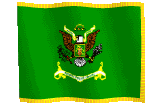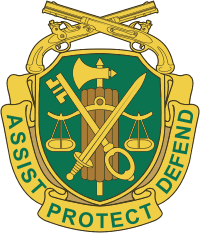Reflection “We used to work a three-month duty rotation cycle consisting of 30 days each of field duty, road duty, and training. We were field MPs ("grunts on wheels") when we were on field duty, during which time we did combat-oriented training. The training month consisted of doing basic skills training, weapons qualifications, etc. Road duty consisted of doing patrols as military police on base. III Corps MPs had the full run of the post, unlike 2nd AD [Armored Division] and 1st Cav. [Cavalry] MPs, who only patrolled their barracks and unit areas (we patrolled those as well, though). There were four shifts: days, swings, mids [midnight] and off. There were four platoons, so it usually worked out that a platoon got to work a shift together. If you were off, then a number of people were put on a standby duty schedule for special duties and details. If there weren't enough people for the duty, you were subject to being rounded up and pressed into service. There was a rule that you couldn't have consumed alcohol in the eight hours prior to going on duty, so when we were off we'd either disappear from the barracks area or immediately start drinking so we wouldn't get tagged for one of these duties (Hey, we were young, not stupid!). The married folks normally didn't get tagged for these type duties unless they were Specialist 4s or higher in rank. One of the types of duties off-duty soldiers would get tagged with was "Low Water Crossing" duty. We called them "Duck Crossings."
Fort Hood has a number of small rivers and creeks that run through it. At that time, there were a couple small bridges over the creeks, but most were channeled through culverts under the roads. Next to these low spots in the road were concrete apron crossings that were built for massive combat vehicles like tanks and armored personnel carriers. Normally, the creeks were pretty low flowing trickles. However, there's an expression for what summer rain's like in Central Texas: "it rains so hard it's like a cow peeing on a flat rock." During my service at Fort Hood, I learned fast that a Texas summer rain would quickly cause the streams to fill up and overwhelm most of the low points in the roads. Low Water Crossing duty would have us go out to the points where the creeks and rivers flooded the roads and stop any cars or combat vehicles that approached, and have the drivers stop the vehicles or turn them around. We had to do this because people often underestimated the power of the floodwaters. I once stopped a platoon of M-1 tanks that were returning from field exercises that were going to cross a flooded tank crossing. The tank platoon's leader ordered me to get out of the way and had his first tank ford the swollen creek across the concrete apron of the tank crossing. It got about half way across and the water caught it and pushed it off the apron's edge, where it flipped over.
On the afternoon of June 3, one of those infamous Texas summer rains. The sky turned the afternoon very dark; it seems like it was later in the day than it really was. The PMO made the decision to set up Low Water Crossings. Most of us were on road duty at the time and my platoon, third platoon, was on day shift. PFC Storm was in either first or second platoon. As I was one of the senior specialists by that point (my enlistment would be up in November that year), I was one of the last to get off duty, so I was late getting back to the company armory to turn in my weapon. I was on duty over at the Provost Marshal Office when the Low Water Crossing was called to duty. I got back to the company just as they were getting ready to go on duty. The drivers had just been dismissed to go get the M151A2 [model] jeeps from the motor pool.
The standard uniform for duck crossing duty was BDU's, [battle dress uniform] helmet liner, road gear, issue weapon, ammunition, night stick, handcuffs and first aid kit on a LBE [Load Bearing Equipment] belt, a flashlight, and a yellow knee-length raincoat. The standard procedure was to draw your weapon, have a short formation, get your assignment, and then go to your place of duty. The drivers would be inspect, you'd drive the jeep out to your assigned location, park, and then spend the rest of your shift stopping cars and combat vehicles. If you were on the North Fort Hood patrol, you'd go to the opposite side of the crossing at one of the larger tank crossings. I was on that duty when I watched the water flip the M-1 tank.
The motor pool was a short walk from the barracks. The "front" of the barracks where we had all of our formations, was the loading dock area. It was actually off of a side street. On the backside of the barracks, there was a two-lane road running each way --a total of four lanes-- that stretched from the Second Armored Division's area of the post all the way to Clear Creek. In between each two-lane road were things like parking lots and base swimming pools. Beyond the roads were the fenced-in motor pools where all the combat vehicles were kept and maintained. A drainage ditch ran between the farthest two-lane road and the motor pool fence. The ditch had a storm drain so water could flow into the post's underground storm water drainage system.
I had worked day shift that day, and was pretty late getting off of duty. By the time I got a ride from the PMO [Provost Marshal Office] back to the company, the sky was very dark and it had been raining very hard for a while. A lot of the roads in the unit areas were flooded and water was actually running along them like they were streams, including the farthest two lanes of the road behind the barracks. I was still turning in my weapon when someone came running back to the company and told the duty NCO [Noncommissioned Officer] what happened. I believe it was PFC Siebert or Ketchum who witnessed her death. PFC Storm and some others were walking to the motor pool in the downpour along the water-covered road to get their jeeps when PFC Storm stepped off the surface of the road and into the drainage ditch. The depth and force of the water immediately swept her away and into the underground storm drain system. Her body was recovered in an open drainage ditch over by Darnell Army Hospital.
The company held a memorial service for her and there was standing room only. I remember PFC Storm was thin, athletic and had blond hair. She always smiled and I don't recall her ever saying a bad word to or about anyone, nor did she ever complain. She was a very easy person to get along with and she seemed to have it all together. Her death was a really sobering event for all of us. We were used to dealing with injuries and death from fights, car crashes, and suicides, but it was never one of our own and never in such an unforeseeable and tragic way. She told us once she had a twin sister. I like to believe that we all imagined how lucky her sister was for those 19 short years.” SPC/4 Murray “Manny” Van Pelt, 401st MP Company, 720th MP Battalion, 89th MP Brigade, III Corps, Fort Hood, Texas, April 1984-July 1986.

